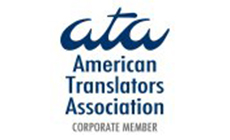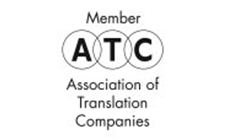Translation is an intricate art that goes beyond simply converting words from one language to another; it involves navigating a complex landscape of linguistic, cultural, and contextual challenges.
As globalization breaks down language barriers, the demand for accurate and culturally sensitive translations has never been greater. However, translators often face a myriad of difficulties that can complicate their work. This article delves into some of the most common language translation problems, examining how factors like idiomatic expressions, cultural context, ambiguity, and technical jargon can hinder the translation process.
1/ Linguistic Nuances and Idiomatic Expressions
Idioms are those colorful phrases that give language character, like adding sprinkles to a cupcake. They convey meanings that often don’t make sense when interpreted literally, like “kick the bucket” meaning to die rather than to literally engage in a playful game of soccer with a bucket. These expressions can be deeply embedded in culture, and for a translator, they present a delicate puzzle: how to maintain the charm of the original while ensuring the message remains intact.
Translators must think creatively, often opting for an equivalent expression in the target language that captures the spirit of the original rather than its literal meaning.
2/ Cultural Context and Sensitivity in Translation
Language reflects values, traditions, and social norms, much like a mirror held up to society. This means that a phrase or expression that is perfectly acceptable in one culture might raise eyebrows in another, like offering a thumbs-up in some countries, which is a gesture of approval, but is considered rude in others.
A translator who understands cultural context can make informed choices that resonate with the target audience. This not only improves the quality of the translation but also builds trust and rapport.
3/ Understanding Ambiguous Words and Their Meanings
Words can have multiple meanings (polysemy) depending on context, which can lead to confusion, like saying “bank” and trying to determine if you’re talking about a financial institution or the side of a river.
To tackle this issue, translators often have a few tricks up their sleeves. First, they look for context clues within the text to unravel the intended meaning. Sometimes, they steer clear of ambiguity altogether by rephrasing the term or using a clearer synonym. If all else fails, a footnote can be a translator’s best friend, providing vital context without cluttering the main text.
4/ Technical Jargon and Specialized Terminology
Technical jargon and specialized terminology can make translation feel like decoding an ancient script; only instead of hieroglyphics, you’re surrounded by terms like “hemodynamics” or “force majeure.” Every industry has its own lingo, often sprinkled with acronyms and insider slang that only the initiated understand.
Translators often consult with subject matter experts (SMEs). These folks are like your personal Wikipedia—only much more reliable and without the conspiracy theories. They also invest in glossaries or databases that specialize in their field. And don’t forget the power of context! Understanding how these terms are used within the text can clarify their meaning. Lastly, if the jargon continues to baffle them, a footnote or explanation can save them from sending readers into a confusion spiral.
5/ Variations in Dialects and Regional Differences
Just when you think you’ve mastered a language, you encounter someone from a different region who makes you second guess everything you’ve learned. Dialect variations can drastically alter meanings, spelling, and even pronunciation. This makes translation a bit like a tightrope walk—one misstep, and you could find yourself in a linguistic free fall.
To mitigate the chaos of dialects, the best bet is to stay informed. Translators familiarize themselves with the regional nuances of the target audience. They also work with native speakers whenever possible. They can help in navigating the uncharted waters of local slang and idiom to avoid any accidental faux pas.
6/ The Role of Machine Translation and Its Limitations
Today, tools like Google Translate and DeepL offer surprisingly coherent translations. But don’t be fooled by their shiny interfaces; these machines are still trying to figure out the nuances of human language which, spoiler alert, is a notoriously tricky beast to tame.
While MT can speed things up, it’s not without its pitfalls. The dreaded “lost in translation” phenomenon rears its ugly head when machines misunderstand context, idiomatic expressions, or cultural references. A classic example? Translating a phrase like “kick the bucket” can lead to some hilarious yet catastrophic misunderstandings. So, if you’re relying solely on machines, be prepared for occasional comedy gold but with potential accuracy pitfalls. Always follow up with a human touch.
Navigating the murky waters of translation is easier when you have a trusty map. So here are some best practices Prime Production translators keep to stay on course:
- They always research their subject matter,
- They maintain clear communication with clients about expectations,
- They create a glossary of terms to ensure consistency.
- They don’t hesitate to ask for help—collaboration can often lead to clarity that lone efforts simply can’t provide.
Remember, great translators are part detective, part linguist, and 100% adaptable.













Leave A Comment